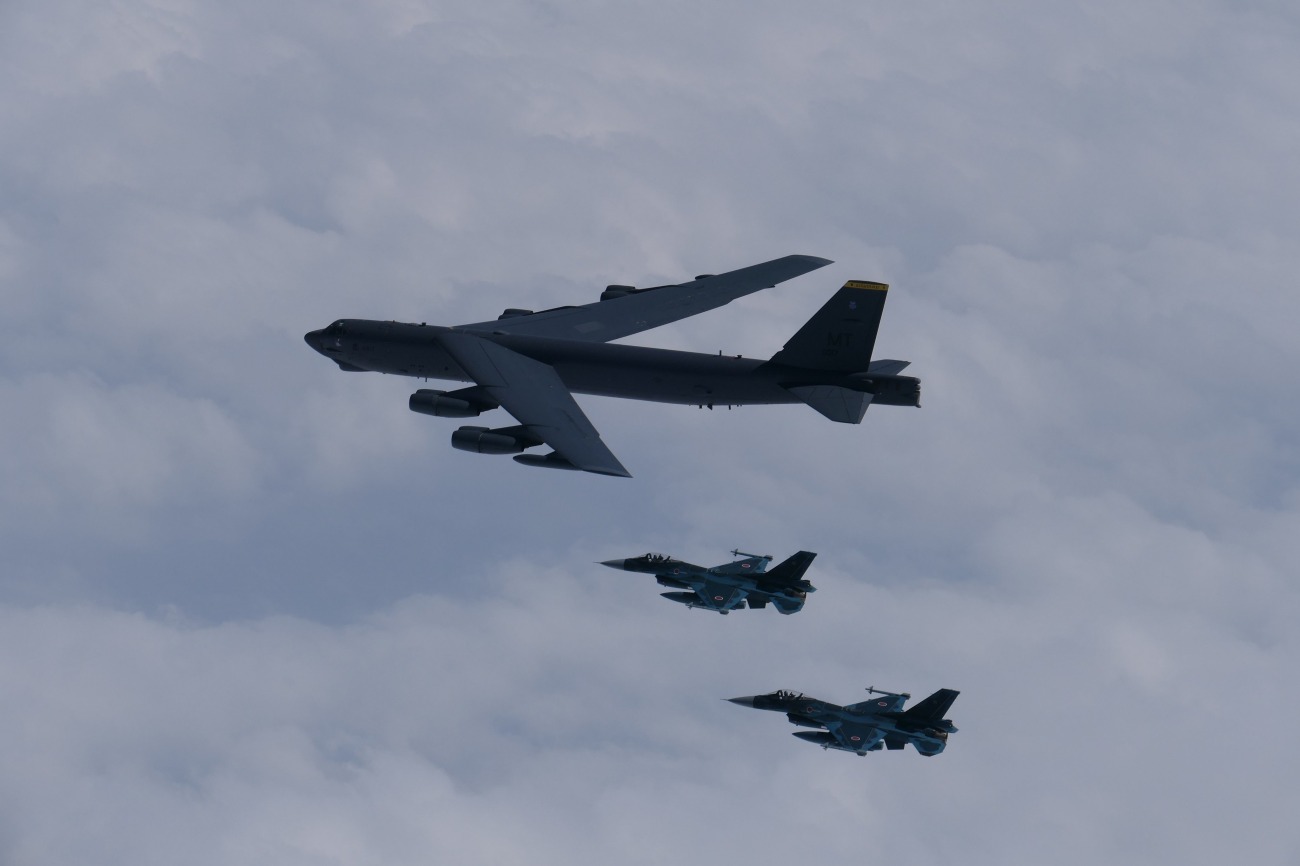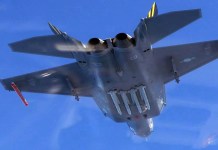Australia’s earlier stance of “not supporting” the United States, its ally, in a conflict with China seems to be changing, particularly with the significant increase of American military presence throughout the Pacific nation.
One aspect of the cooperation between Australia and the United States involves using Australian military bases that could be used to contain China.
A recent report from The Washington Post highlights the significant activity at Tindal Air Base in Australia. The report states that Australia and the US are working silently to turn this “once quiet military installation” into a possible launchpad in the event of a battle with China.
The report highlights the key developments, including the extension of the runway to accommodate larger aircraft, like the B-52 bombers, which has enabled significant improvements in operational capabilities.
Further, the construction of two enormous fuel depots is underway for the fighter jets operated by the US Air Force (USAF) and the Royal Australian Air Force (RAAF). Two earth-covered bunkers have also been constructed to store munitions.
The US already has a huge air asset presence at Andersen Air Force Base in Guam. The 18th Wing at Kadena Air Base, Okinawa, Japan, is the largest U.S. military installation in the Asia-Pacific and the largest wing in the US Air Force (USAF). The US also has access to nine bases in the Philippines, which can be used in a conflict against China since the two allies have a Mutual Defense Treaty (MDT) in place.
Nonetheless, the US continues to expand across the Indo-Pacific to secure bases that could be used as launchpads if China manages to destroy the frontline US military facilities in the Philippines, Japan, as well as the Pacific island of Guam. This explains the US presence at RAAF Tindal, nearly 2,000 miles from the disputed South China Sea.
“This is about deterrence,” Australia’s defense minister, Richard Marles, said in an interview. “We’re working together to deter future conflict and to provide for the collective security of the region in which we live.”
These moves highlight a larger trend, as Canberra and Washington have become more closely aligned with their growing suspicion and caution about Beijing. Critics have gone so far as to say mockingly that Australia is turning into the “51st state” in the US due to the extent of military cooperation.
When asked why Tindal is of interest to the US, Indian Air Force veteran and a seasoned military analyst, Air Marshal Anil Chopra (retd), told EurAsian Times, “Tindal is close to the Darwin military base, which is the northernmost Australian military base located on the Australian coastline. Darwin’s strategic significance is evident in the way that the Australian government continues to pour money and troops into it. However, the second base that the US is highly interested in is Tindal, located a few miles south of Darwin. Military bases in the north would be crucial for operations against China.”
Chopra further explained, “Significantly, Tindal and Darwin Air bases were the only two bases used in the Pitch Black military drills conducted this year. Tindal is strategic for many reasons—it is a Second World War base and already has infrastructure like hardened shelters. The base also houses the F-35A Lightning II jets. It is an important base because it is not too far from the South China Sea and is relatively more secure than Darwin.”
The Australian government website says, “RAAF Base Tindal is located 15 km outside Katherine and 320 km south-east of Darwin in the Northern Territory. Although it is the Air Force’s youngest operational base (except for bare bases), it is now one of Australia’s most important defense sites”
Major exercises, including Pitch Black, Diamond Storm, Arnhem Thunder, and Talisman Sabre, with visiting aircraft and troops from all over the world, are held annually at RAAF Base Tindal. Due to its perfect dry-season weather and proximity to the Delamere Air Weapons Range, RAAF Base Tindal is an excellent site for the RAAF and its coalition allies to undertake advanced training missions.
The RAAF Tindal is just one of several bases throughout Australia being developed for use by the United States. Amid a constantly rising security threat from China, Australia is upgrading or refurbishing many of its decades-old military facilities, many of which were constructed by the United States during World War II.
US Expands In Australia
An analysis published by Reuters late last month, based on documents and discussions with defense officials from Australia and the United States, revealed that the U.S. military is building infrastructure in northern Australia to support force deployment into the South China Sea in a conflict with China.

Darwin, the capital of Australia’s Northern Territory, is closer to the Philippines than Canberra. For many years, the Australian Defence Force and the U.S. Marine Rotational Force have maintained it like a garrison town, with the latter spending six months there every year.
In response to escalating tensions with China, the United States has discreetly begun constructing facilities in northern Australia valued at hundreds of millions of dollars to support F-22 stealth fighters, B-52 bombers, and aircraft for refueling and transport. It is all part of a larger effort to disperse U.S. forces throughout the region and lessen their vulnerability.
🎥: Royal Australian Air Force (RAAF) F-35A Lightning IIs join U.S. Air Force F-22s and a KC-30A for an elephant walk, a close formation of aircraft to demonstrate readiness and air power, during Exercise Pitch Black at RAAF Base Tindal, Australia. pic.twitter.com/dr3MGEKDob
— F-35 Lightning II Joint Program Office (@theF35JPO) August 14, 2024
Important components of Australia’s air force are housed at RAAF Base Tindal, a few hundred kilometers to the south. In previous drills, American jets were temporarily based there. “When you look at the positioning of northern Australia, particularly Darwin, about the region… it’s always good to have multiple options where you would want to put your forces in any type of crisis,” said Colonel Brian Mulvihill, commanding officer of the U.S. Marine Rotational Force.

The Reuters report further stated that the tender documents indicate that intelligence briefing rooms, maintenance hangars, warehouses, computer centers, and enhanced bomber runways are under construction. On a rare visit to the two northern outposts, officials told Reuters that massive fuel storage facilities were already erected.
Additionally, over $300 million has been allocated through U.S. congressional defense authorizations for those years, establishing northern Australia as the top foreign destination for U.S. Air Force and Navy construction investments. The projects are planned for construction in 2024 and 2025.

EurAsian Times understands that Australia is regarded as safe due to its distance from China, even if Chinese missiles are more accurate and have a longer range than in the past. Military analysts have asserted that in case of a conflict in the Western Pacific or the South China Sea, American aircraft could refuel and receive supplies, including food, gasoline, and medical equipment.
Last year, the US and Australia reaffirmed their commitment to expand infrastructure at Tindal and Darwin and agreed to upgrade two additional air bases in northern Australia: Scherger and Curtin. These two bases have been classified as “bare less,” which essentially means that they have limited infrastructure.
In June, the U.S. Navy issued a request for proposals to build hangars, runways, fuel storage facilities, and piers in areas like the Cocos Islands in Australia, as well as in neighboring Timor Leste and Papua New Guinea. The total project value is up to $2 billion.
The Australian government is also injecting money into the development of military facilities in the Northern Territory. In fact, the government recently unveiled plans to spend A$14B “hardening” the northern sites in what has been hailed as the biggest modernization program since at least the Second World War, indicating the strategic importance accorded to the region in the security calculus against an aggressive China.
- Contact the author at sakshi.tiwari9555 (at) gmail.com
- Follow EurAsian Times on Google News




